Overview: EDI students apply the methods they have learned in the program to a topic of their choosing in the fourth and fifth quarters, culminating in a thesis presentation and fair. With my motivation to design solutions that are are joy to use and good for the planet, I chose to tackle food waste.
Problem Statement: According to the USDA, food waste is estimated at 30%-40% of the food supply in the US, corresponding to approximately 133 billion pounds and $161 billion worth of food. How might we design a product or service that brings joy to the user while simultaneously reduces food waste?
Solution: DoubleDip aims to reduce food waste by helping individuals plan meals and grocery shop efficiently while aiding grocery stores in better demand forecasting. By linking saved TikTok, Instagram, and YouTube recipes to a smart shopping list and step-by-step cooking guide, the app empowers first-time independent cooks to use produce before spoilage. Nudges and AI provide personal tips and education on handling produce leftovers, saving users money while reducing waste. On a larger scale, the app helps grocery stores optimize supply chains by leveraging user order data to minimize overstock food waste.
Individual Contribution: UX Research, Journey Mapping, Business Strategy, Prototyping, App Solution, Project Management
Timeline: 20 Weeks
Digging Deeper Through Primary & Secondary Research
Tackling food waste is a big undertaking so via the Double Diamond Approach, I first started to narrow down on the problem space via User Interviews, Immersive Learning, and Secondary Research:
Via Secondary Research, I found that the largest source of waste, sitting at 48%, is right in our homes:
From that statistic, I had the hypothesis that the two groups with the highest potential to waste food are families with young kids, and young individuals (age 18-24). After developing two separate Discussion Guides for Families and Individuals, I found from Primary Research that not all households waste food in equal amounts. Families have young kids with picky eaters, but it was the individuals that wasted the most food.
Insights via Primary Research
After synthesizing and organizing my research notes, and creating a journey map, it started to become clearer why young individuals waste more food than their family with young kids counterparts. Younger individuals aged 18-24 tend to waste more food because they have not yet learned or had the need to develop food management skills during their transitionary time.
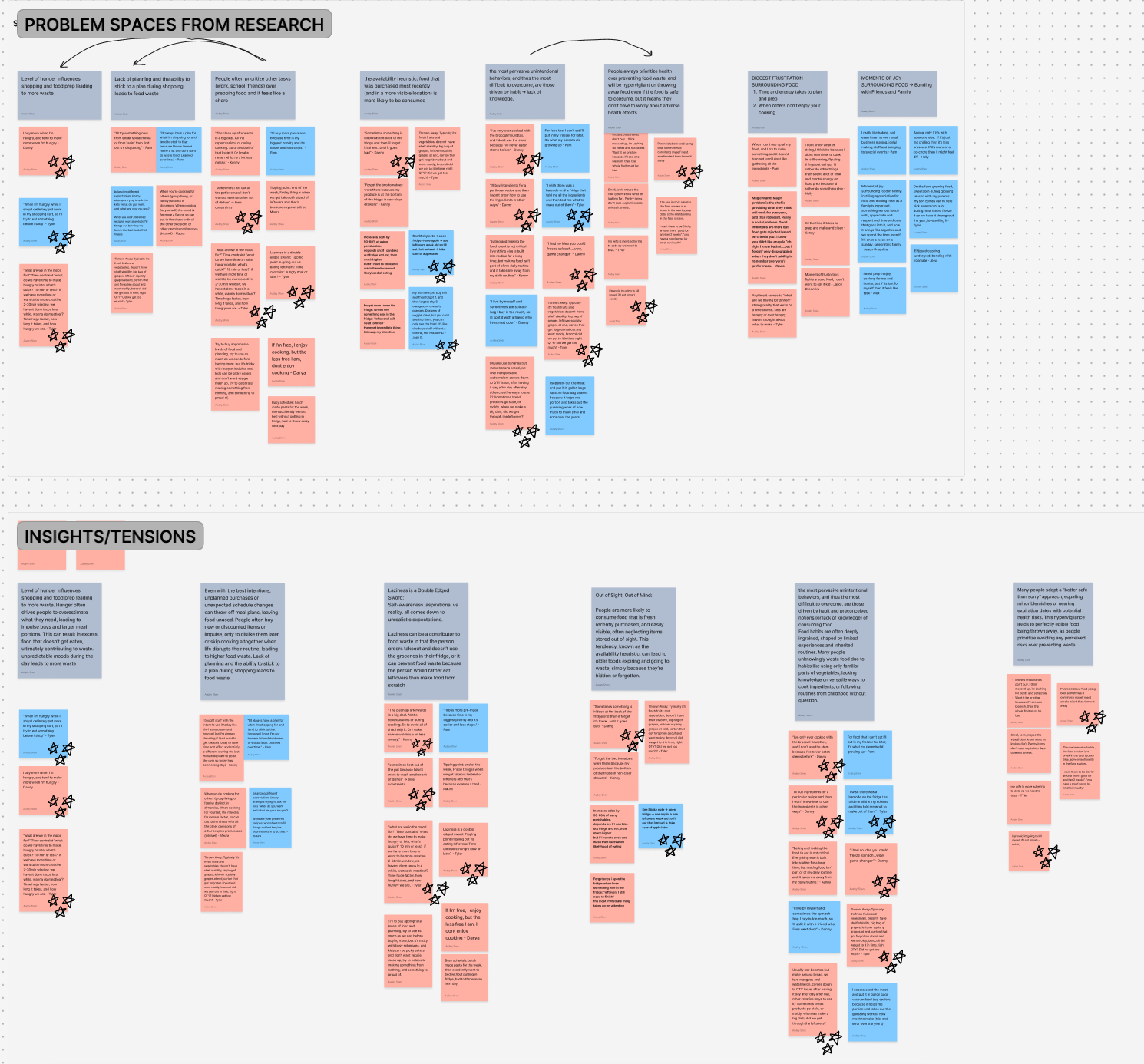
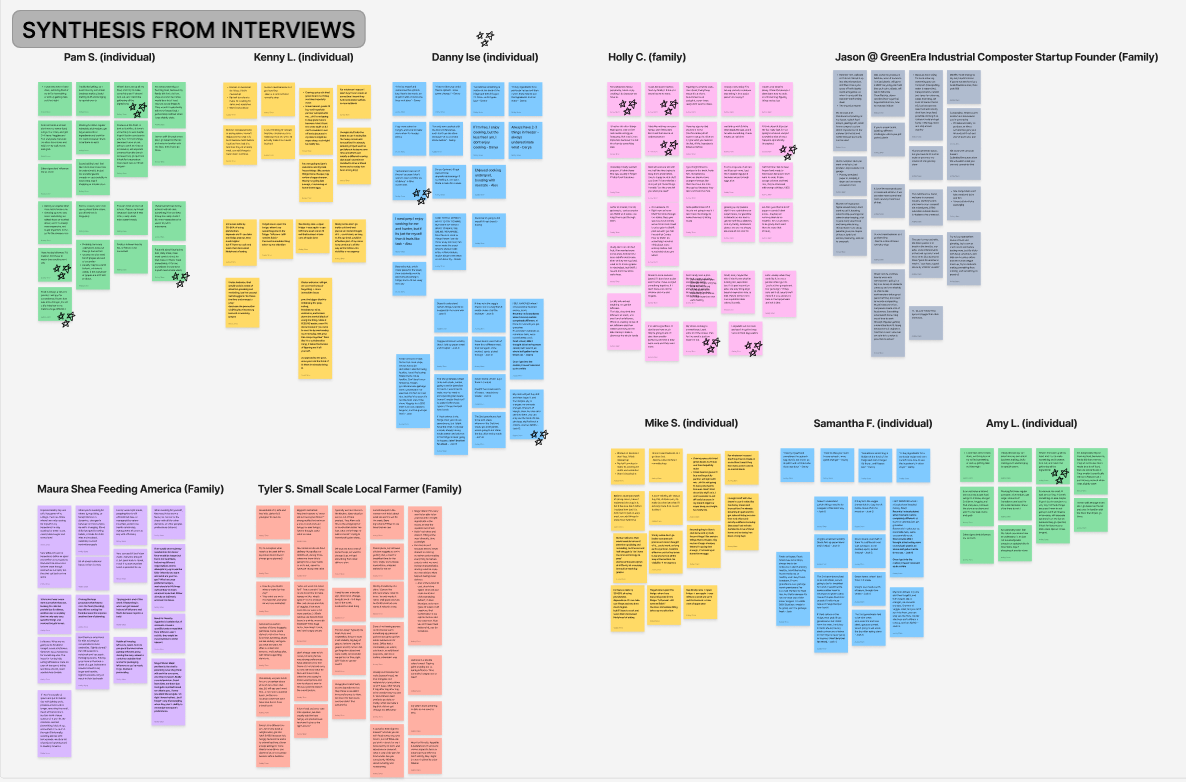
Below is a journey map of 22 year old Kenny paired with the 3 biggest insights derived from my primary research:
Insight 1. "Getting Started is the Biggest Barrier" -> HMW Motivate Individuals to use their fresh produce before it spoils by mentally simplifying the prep process?
Insight 2. "Out of Sight, Out of Mind" -> HMW Design a solution to keep older perishables top of mind, prompting individuals to use them before newer groceries?
Insight 3. "Better Safe than Sorry" -> HMW Build confidence in individuals to use produce with minor blemishes, reducing unnecessary waste?
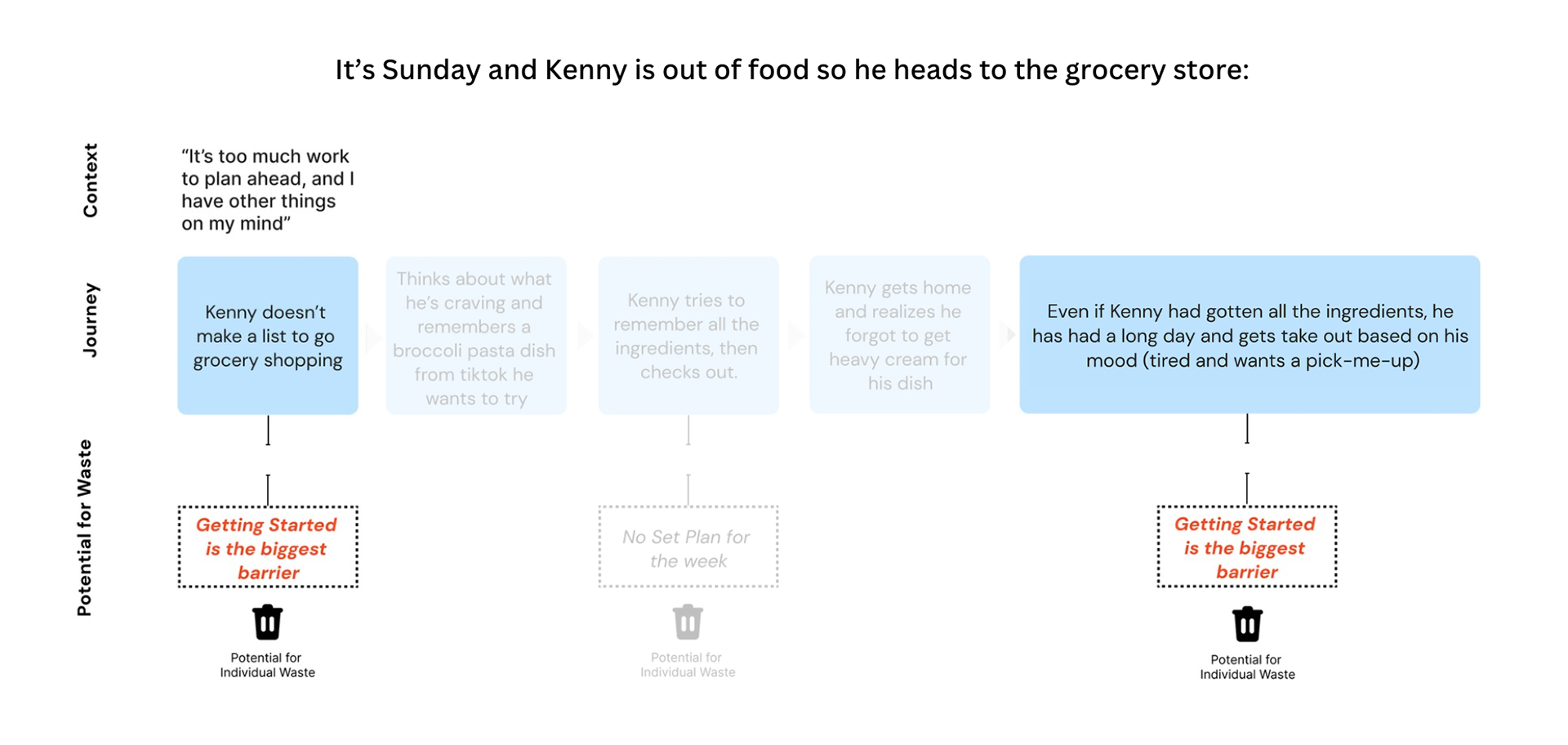
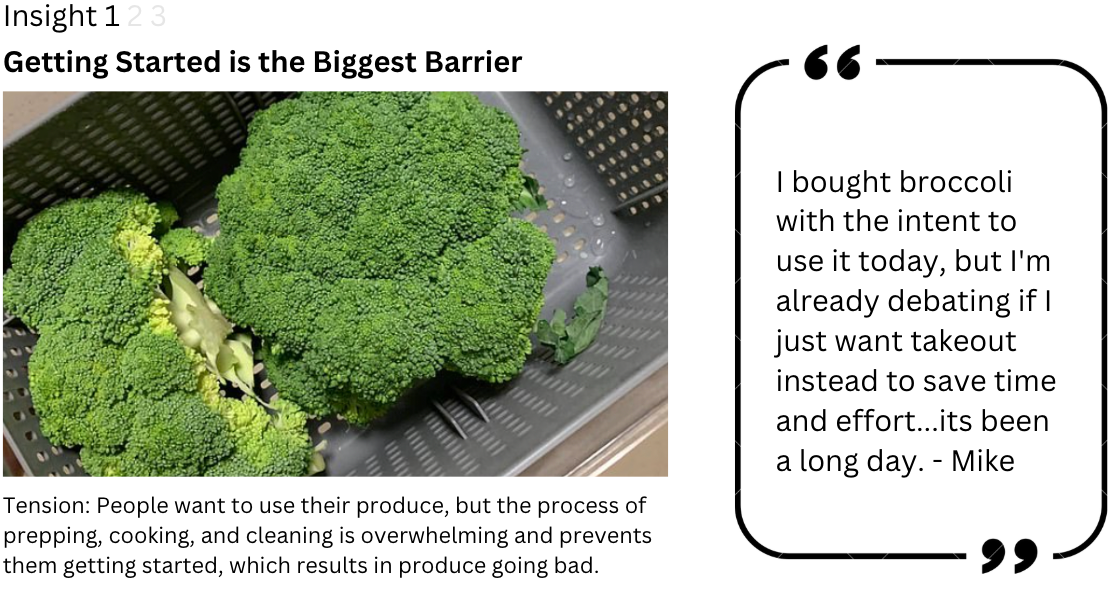
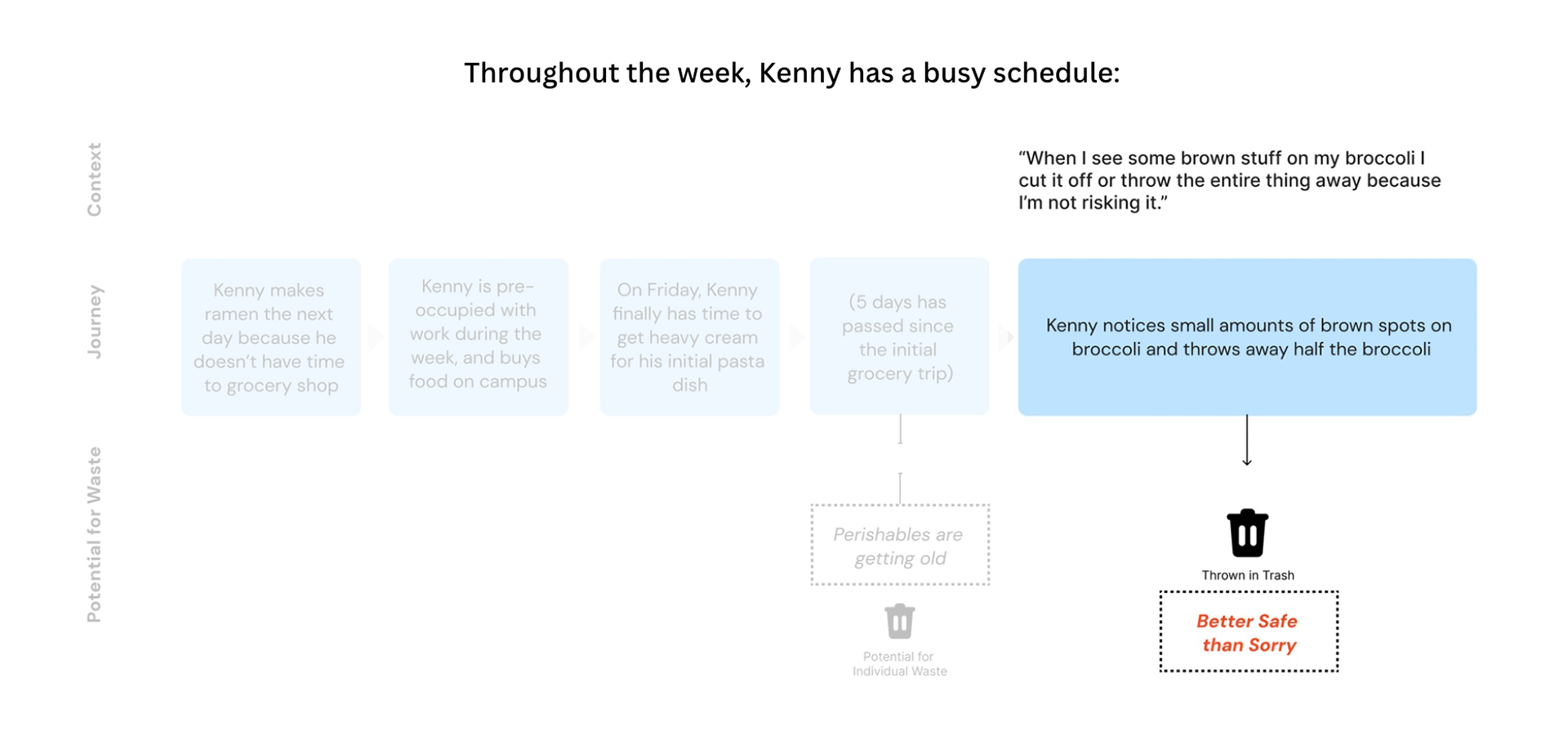
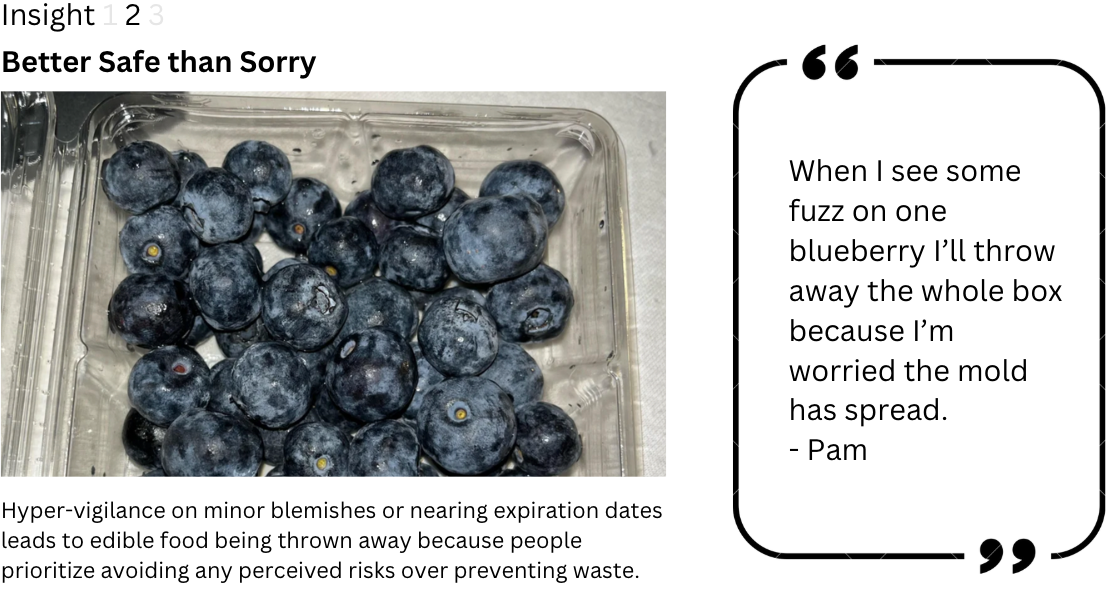
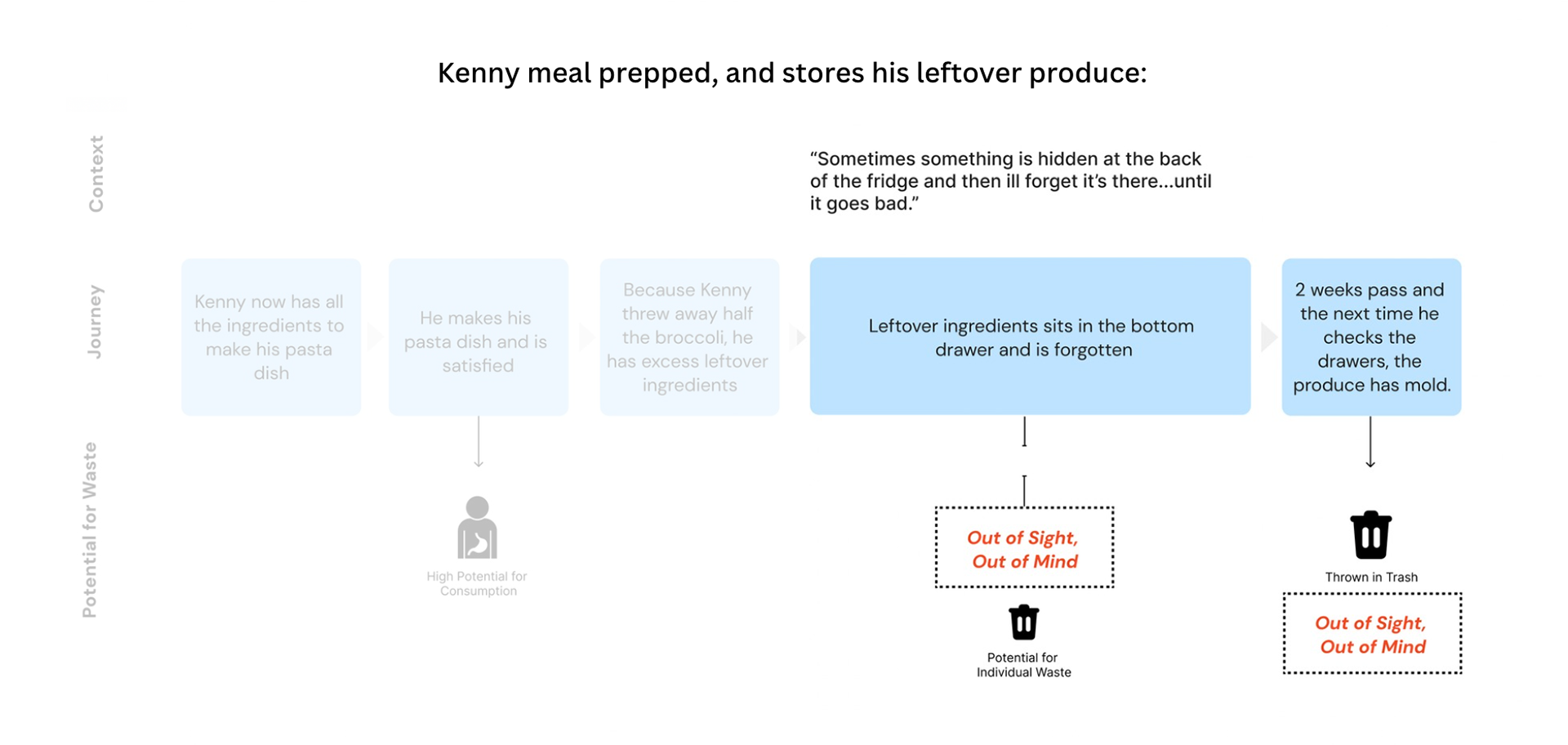
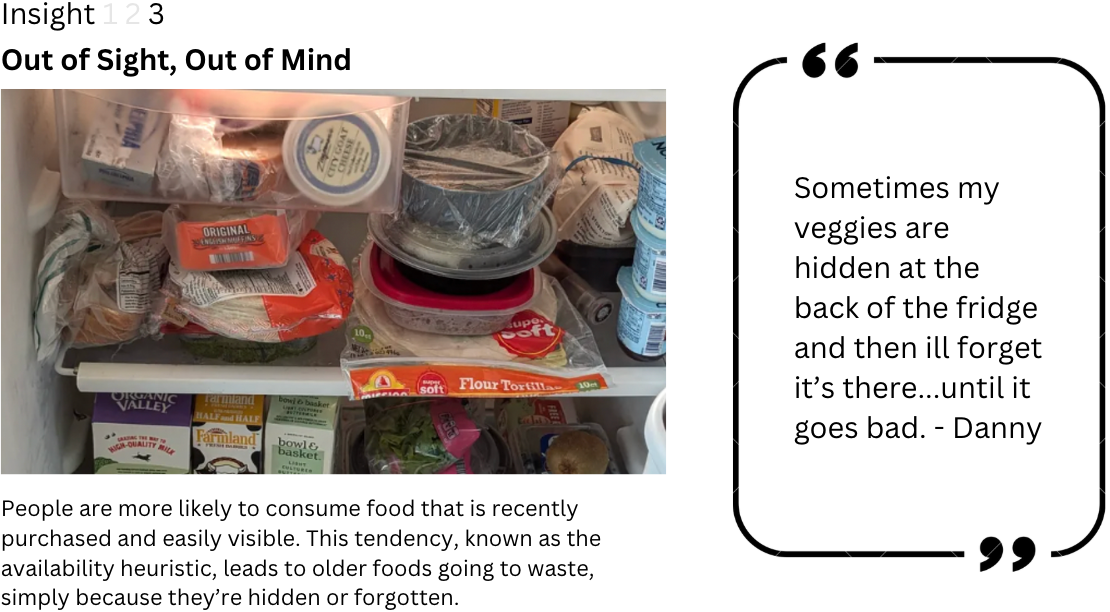
Double Checking my Findings
Since I only had the chance to interview 7 families and 7 individuals (aged 18-24), I wanted to double check via scientific journals that I was heading in the right direction. This was backed up via research published in NCBI.NIH and ScienceDirect, and also seemed to be accurate in public forums:
Brainstorming Solutions & Competitive Analysis
There are so many companies and apps that currently aim to prevent food waste in households. Using the 3 Insights as anchor points, I mapped out competitors that claim to prevent food waste.
What I've realized was that none of the solutions tackle all three problems that individuals are currently dealing with, but more importantly, they don't take into account the emotional aspects of food consumption that the problem of food waste stems from:
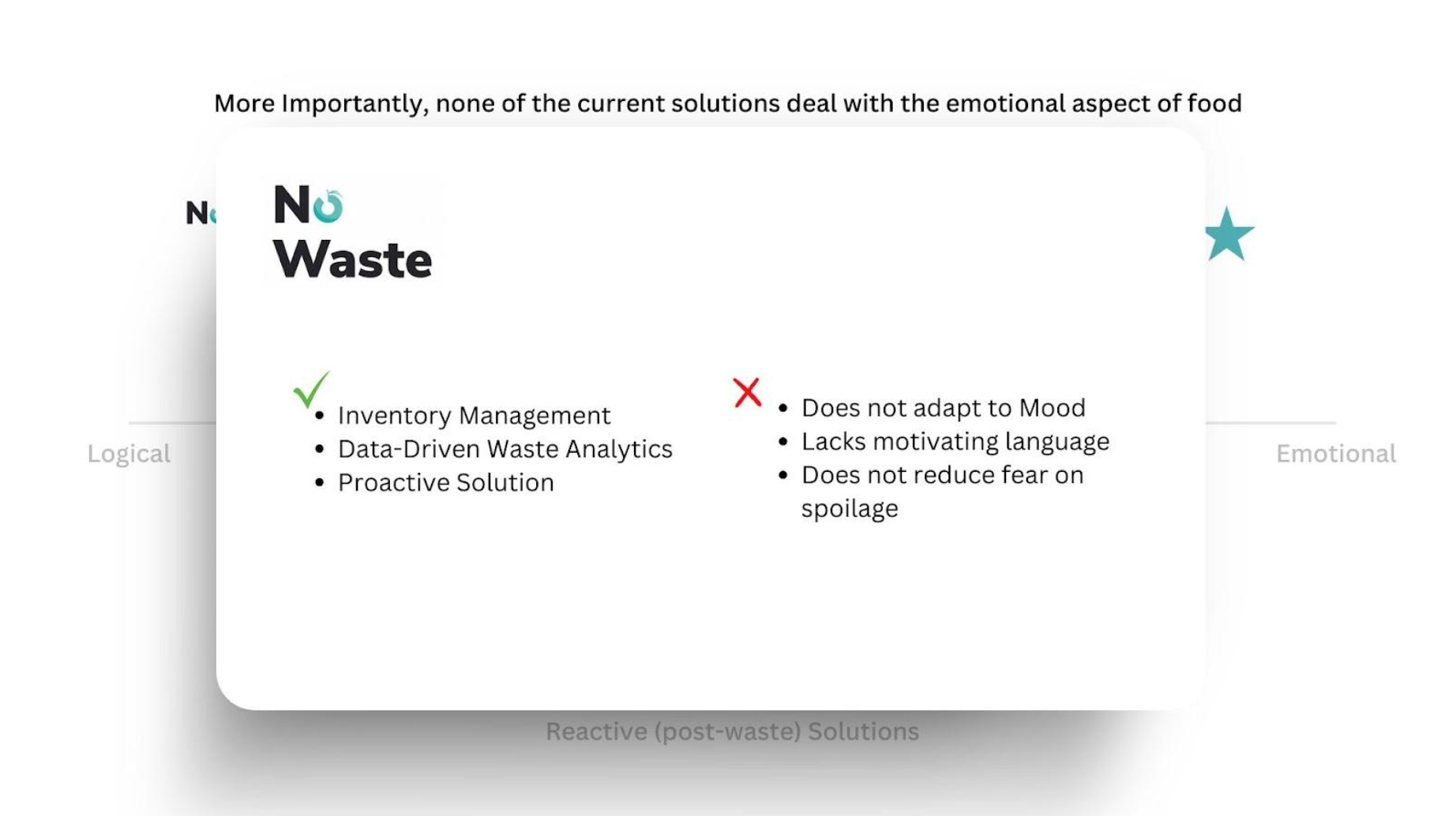
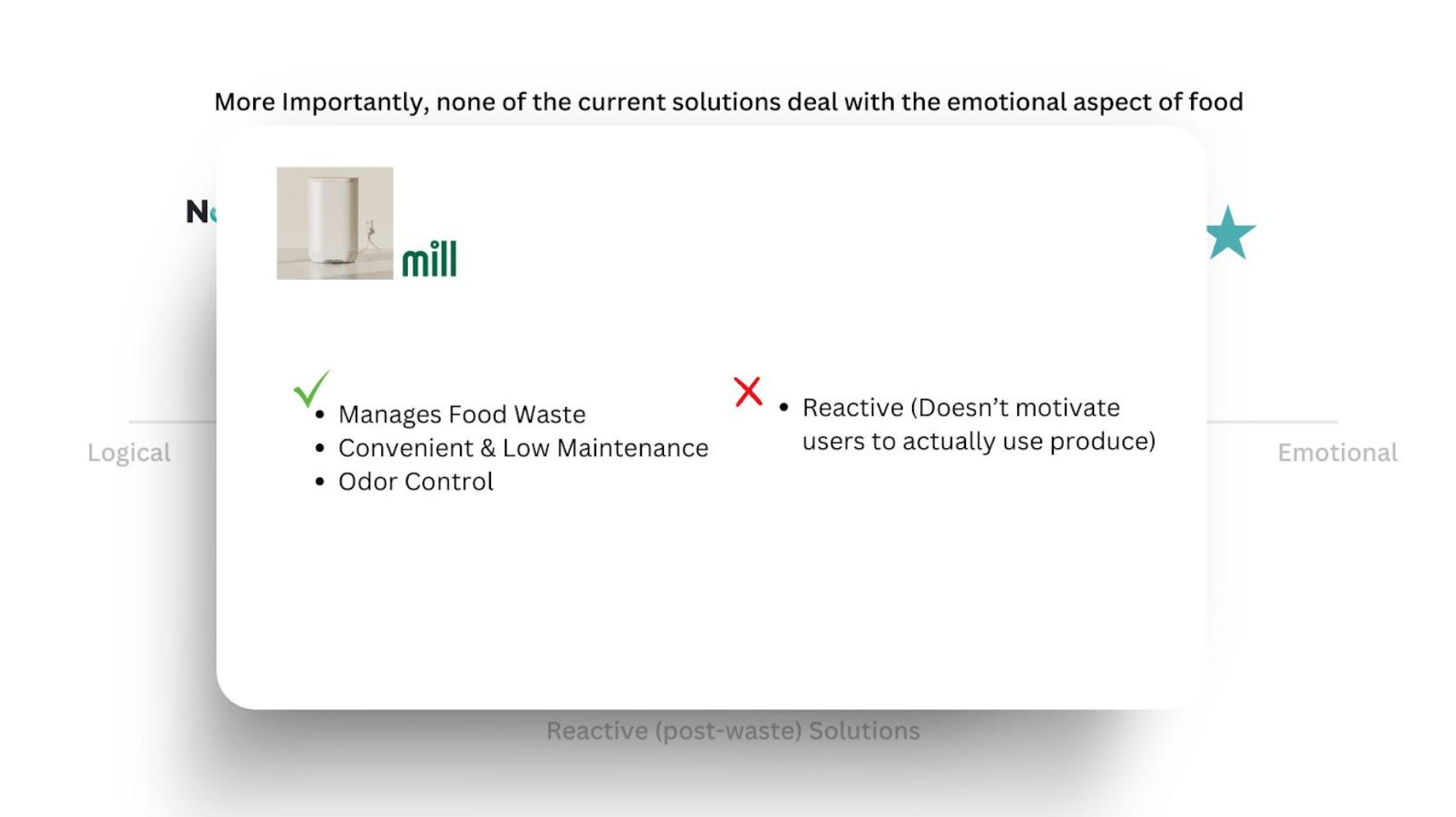
My goal was to design a solution that can tackle the three insights while making it a joyful experience. Using sketches, wireframes, and quick prototyping via Figma, I had my past interviewees test and give feedback on the features that aimed to solve the emotional barriers to preventing food waste, such as motivating individuals to use fresh produce before it spoils, and building confidence in individuals to use produce with minor blemishes.
Below are some screenshots of notes from the interviews:
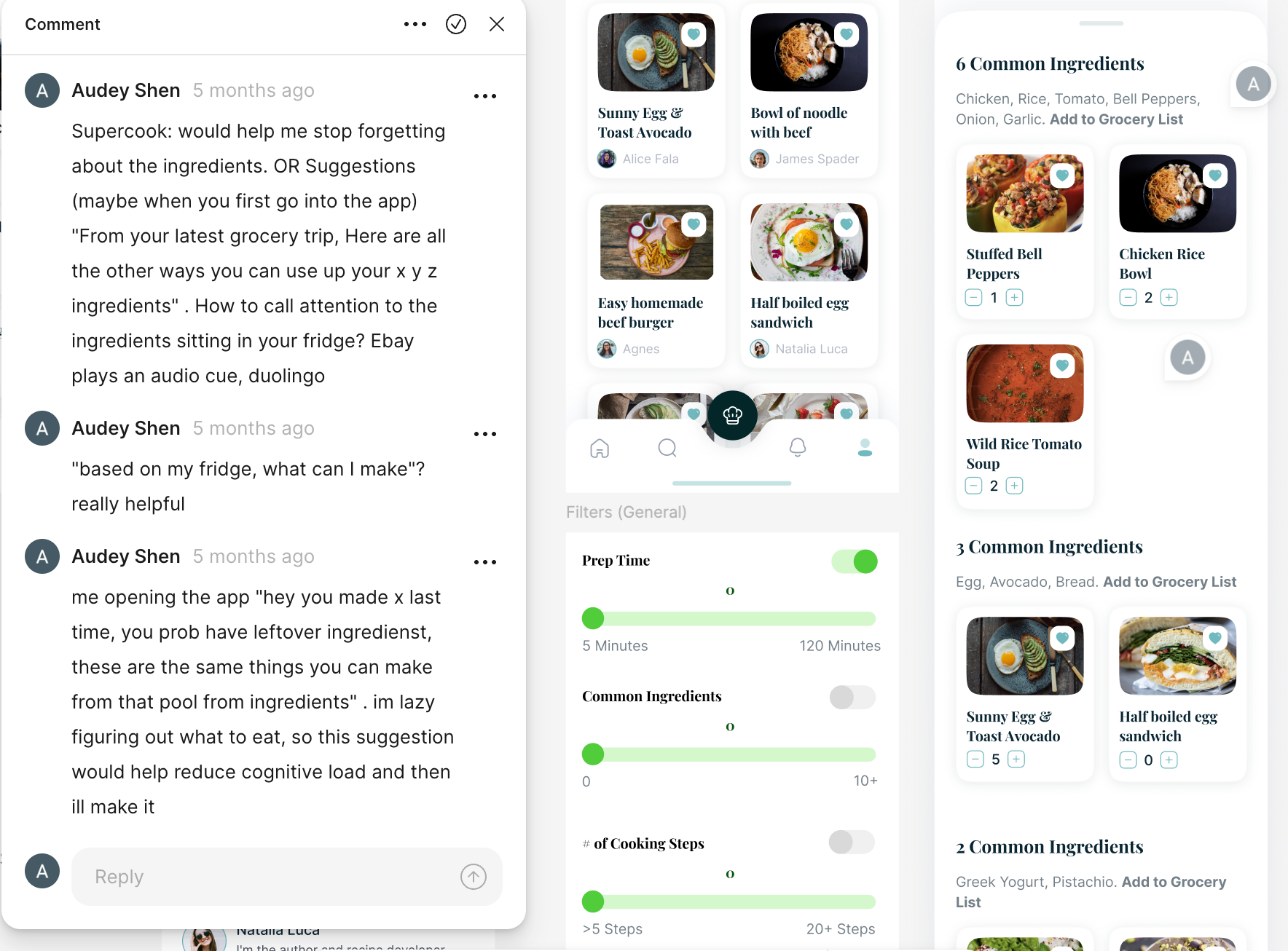
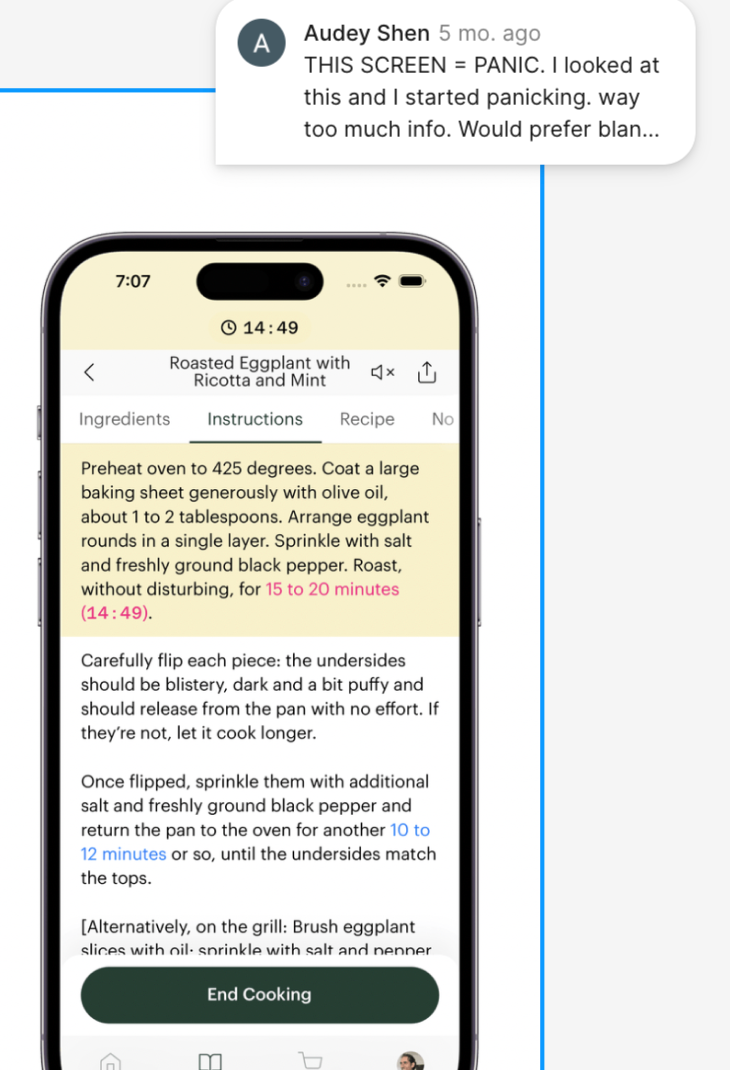
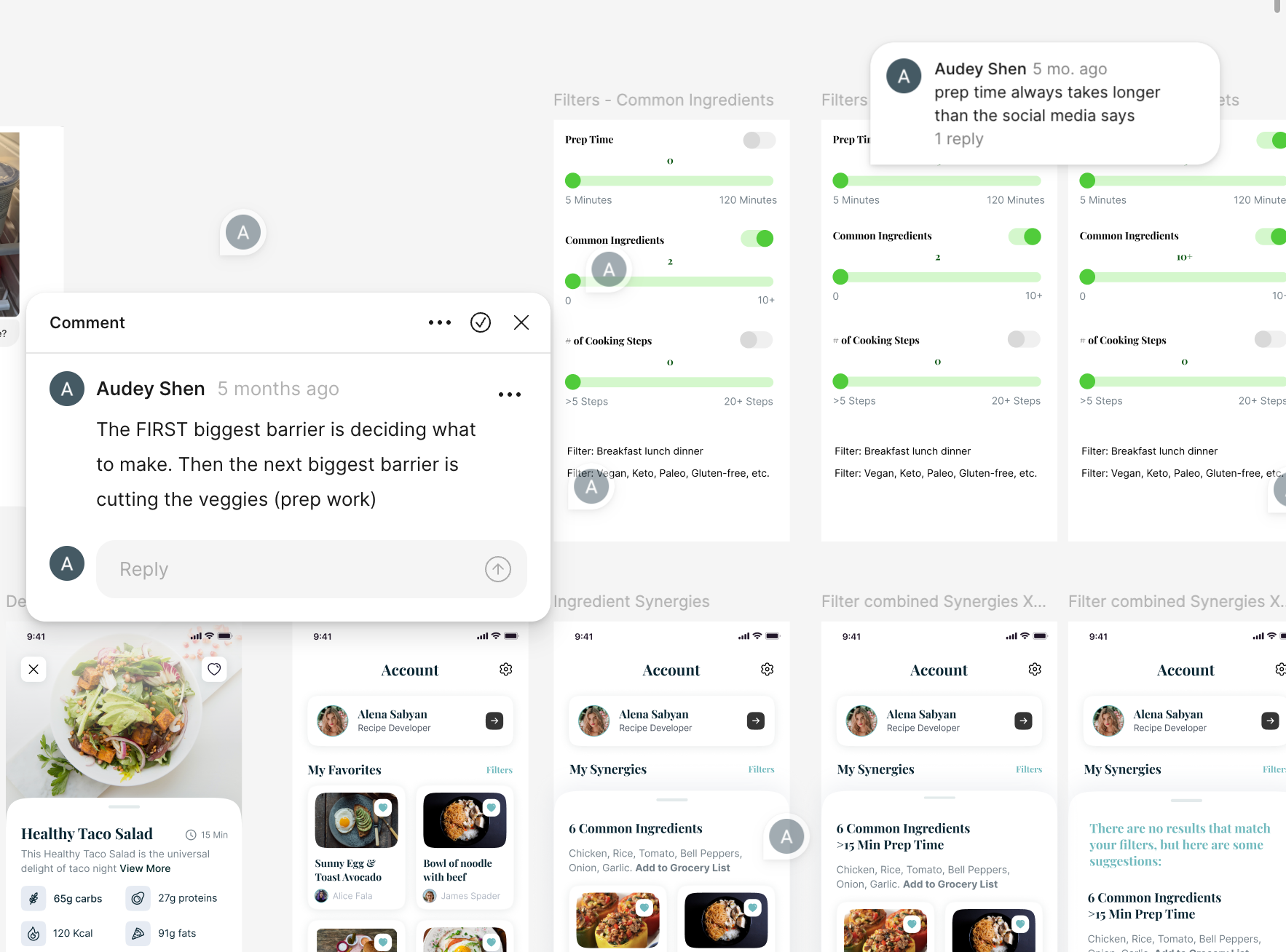
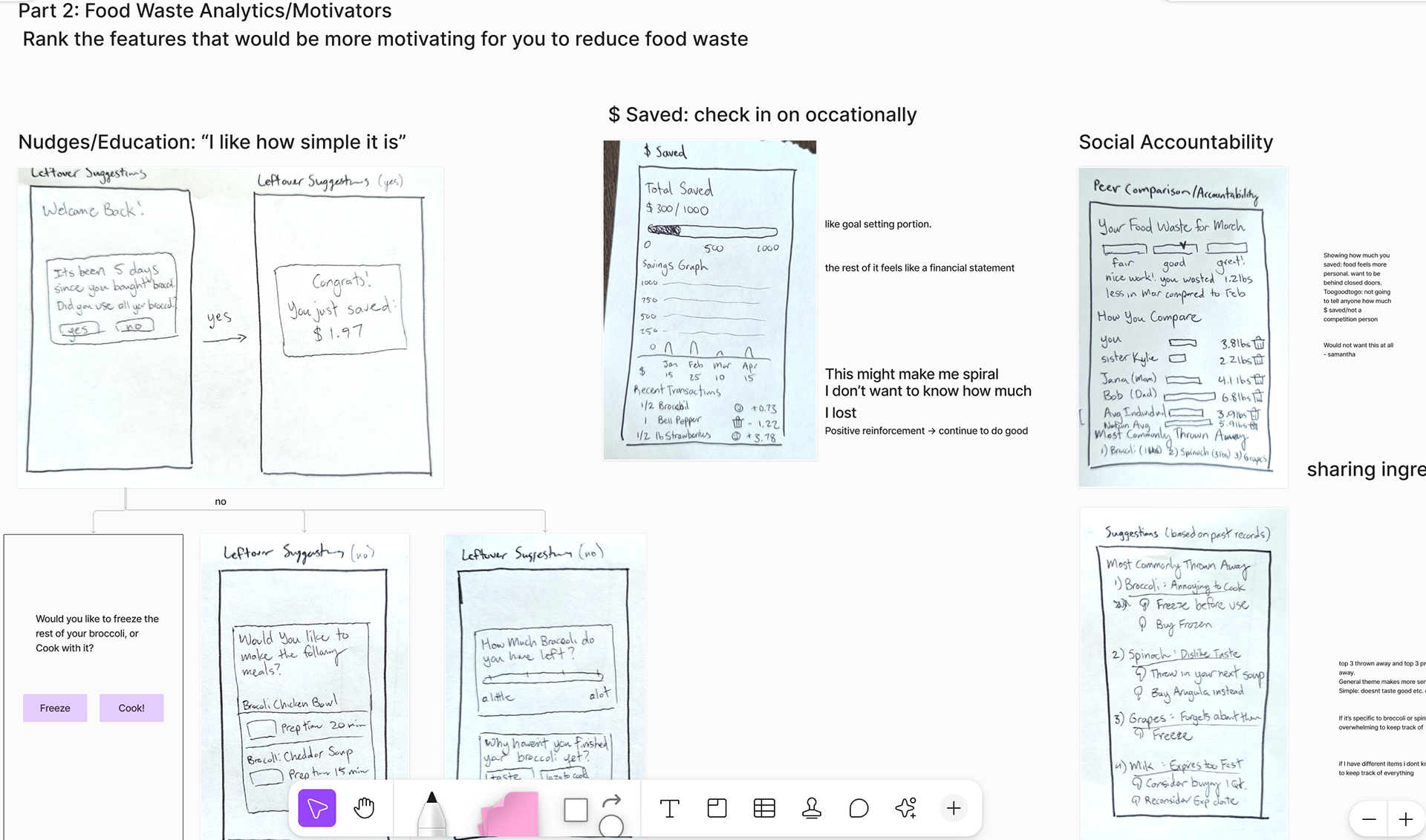
I found that young individuals didn't mind notifications as long as they were timed with their meal prep time, many got overwhelmed with how instructions on current apps are set up, and that privately seeing money saved was a bigger motivator than friendly competition. The overall tone also had to be positive and motivating, framed in a way to not suggest any guilt of food waste.
Solution: DoubleDip (screenshots of parts of my final presentation)
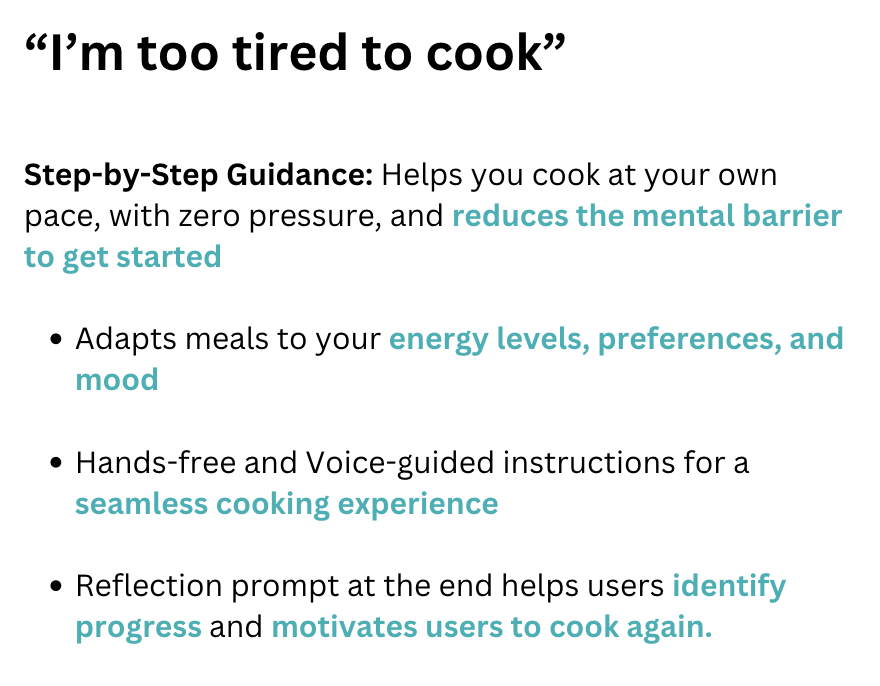
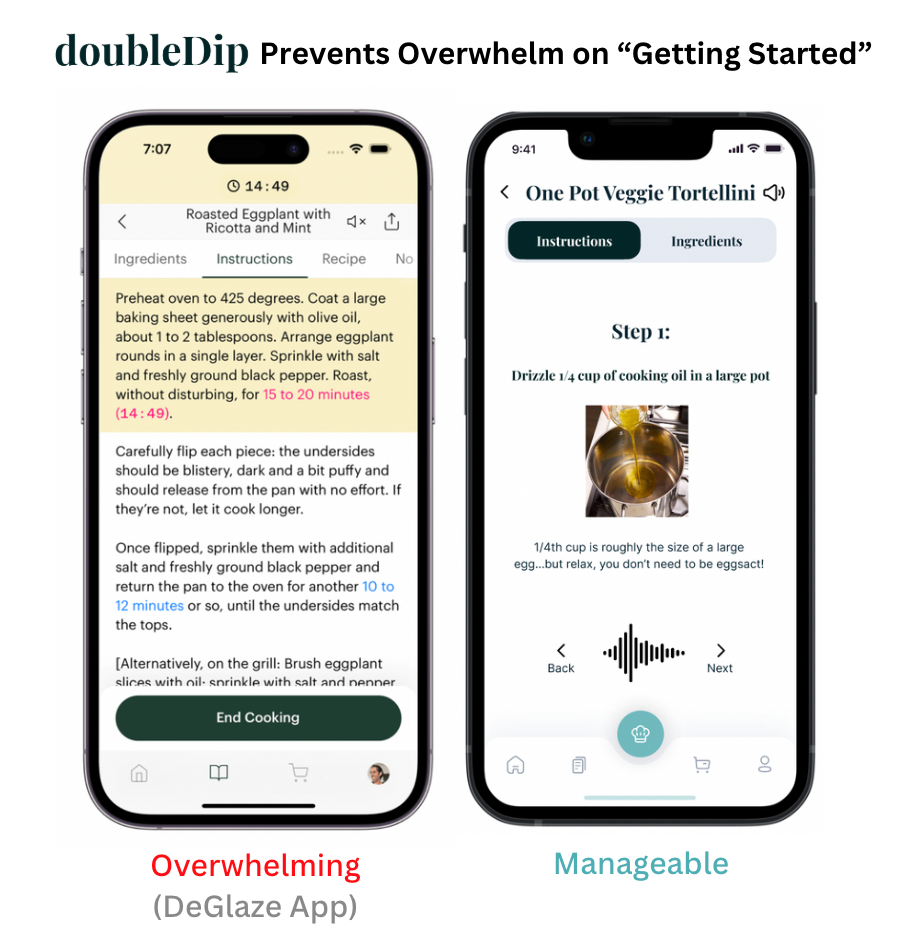
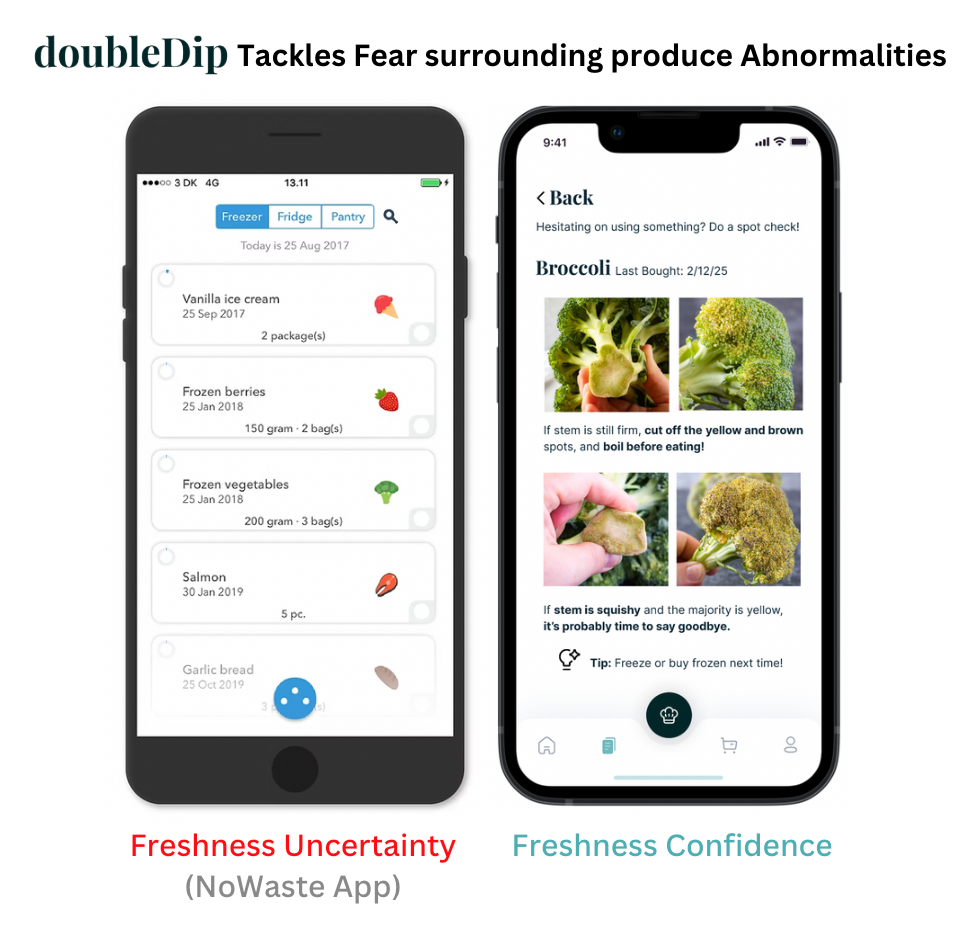
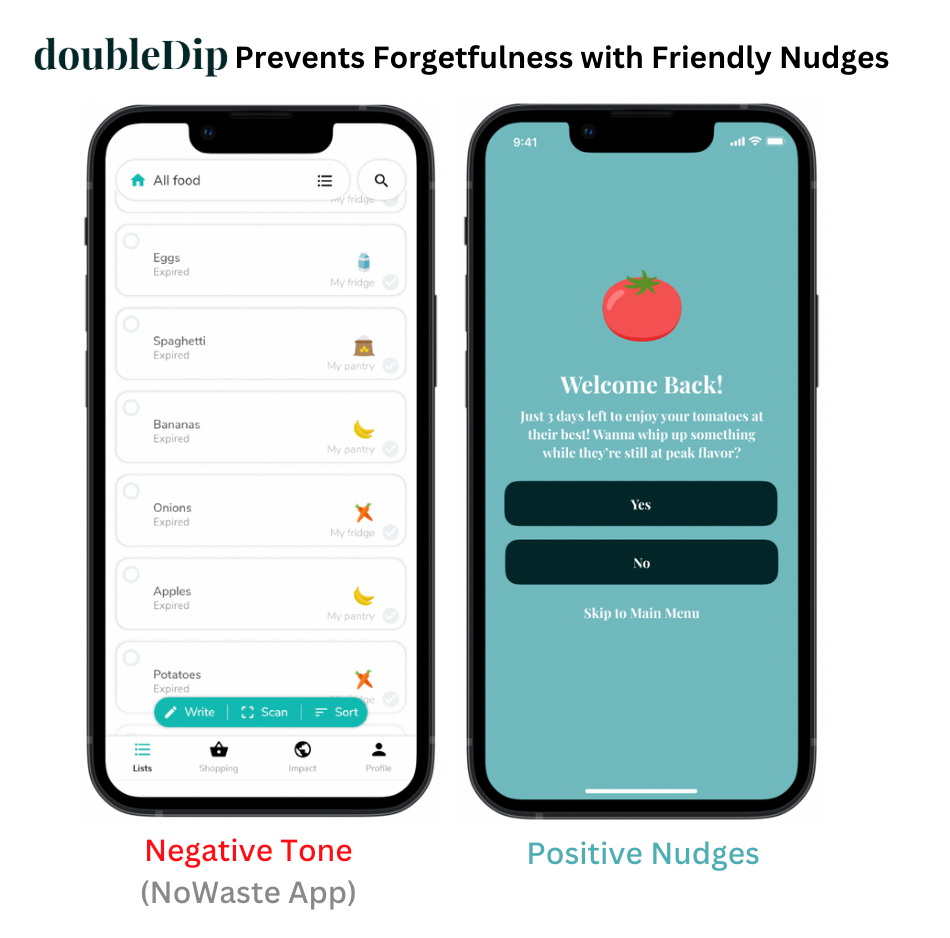
With more users, less food should go to waste, and so I've explored making the app free in exchange for consumer data. When given the choice, my interviewees said they would like the option to opt in or out. However, 6/7 said they would rather receive this as a free service than give up their grocery shopping data because 1) they assumed their data would be collected regardless, and 2) they're less worried about giving up food purchasing habits to grocery stores, than giving up banking or health data.
Below is an exploration Business Model on how doubleDip would make money via Grocery Store Partnerships:
Next Steps
Given more time, I would have loved to continue testing and refining the features with additional user feedback.
1. It would be great to see user behavior and their individual food waste metrics before and after using doubleDip for 1 month, 3 months, 1 year, and their overall satisfaction levels.
2. I would love to measure if doubleDip's internal educational nudges help them become a more confident cook overtime. As individuals get more comfortable with handling fresh produce, I would hope it promotes more curiosity in unfamiliar (and in-season) ingredients, and turns cooking into a more joyful experience rather than a chore that so many of the individuals seem to feel currently.
3. I would also be interested to test features on edge-case scenarios, such as how they use (or don't use) doubleDip when a trip comes up or during a stressful week at work.
Final Thoughts
In UX Research: Even when participants feel comfortable enough to share their truth, their words and actions can be different. Learn to spot inconsistencies, and pay attention to what surfaces at the end of a session and in informal unstructured conversations. Some of the most valuable insights come when people don't think you're paying attention, and they act based on the subconscious.
In Product Design: The most obvious solution to a problem may be to go with the higher number of participants that favor one solution over another. However, direction can come from not what's most obvious, but what's most specific. There is treasure to be found in that one participant with a deep passion about the topic.
In Strategy: With a problem as big as tackling food waste, there are so many areas to improve upon. However, by trying to solve everything, you're solving nothing. Employing research and using frameworks to visually deconstruct the problem into smaller, manageable sub-problems, the process of designing a solution becomes less daunting.
Special thanks to: P. Jim Wicks, P. Amy Schwartz, Mentor Mike Edmunds, P. Amy O’Keefe, all the interviewees, and my EDI Cohort who made this possible.